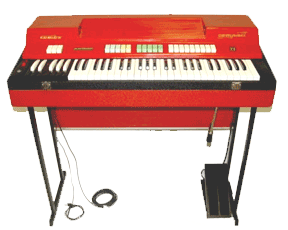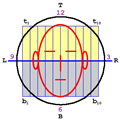I'm not sure is this is the right forum for this question, but I'm not yet active in any of the popular daw/music production forums.
I need to create some percussion instruments from recorded samples, some kind of a drum set. What should I do? Is there a free sampler that supports zone/region keyboard mapping or something like that?
- It is currently Sat Dec 20, 2025 4:20 am • All times are UTC - 5 hours [ DST ]
Attention:
Welcome to the old forum. While it is no longer updated, there is a wealth of information here that you may search and learn from.
To partake in the current forum discussion, please visit https://forums.presonus.com
How to create an instrument from samples?
2 posts
• Page 1 of 1
Re: How to create an instrument from samples?
elerouxx wrote:I'm not sure is this is the right forum for this question, but I'm not yet active in any of the popular daw/music production forums.
I need to create some percussion instruments from recorded samples, some kind of a drum set. What should I do? Is there a free sampler that supports zone/region keyboard mapping or something like that?
You can do this with SampleTank, and there are discussions in the IK Multimedia FORUM on how to do it, but it also is explained in the user manual, and there is a bit more information with examples in the SampleTank tutorial available at Groove3, which currently is on sale for $12.49 (US) . . .
[NOTE: SampleTank FREE is the full version of the SampleTank engine and standalone user interface, and it should do all the sampling stuff. I have all the IK Multimedia virtual instruments, so it is not easy for me to determine whether SampleTank FREE provides user-defined custom sound sampling, but I think that it does . . . ]
SampleTank FREE (IK Multimedia)
[NOTE: The Groove 3 video tutorial essentially is someone reading the user manual and then performing the steps, but it is helpful to see where the various buttons and so forth are located in the standalone SampleTank user interface, as well as to confirm the fact that it works, so while there are no vast insights, I think it the Groove2 video tutorial is worth $12.49 (US). When you first start with SampleTank, there is so much stuff that is new, and it is helpful to watch it being used. For reference, some of the Groove3 video tutorials are simplistic, in the sense for example of a training video on how to open a can showing someone using a can opener to open a can and that is all there is to the training video, but other Groove3 training videos provide more insights, where they might show a range of can openers, as well as explain details about how food is canned and the reason for different types of lining inside cans. The "Mastering with T-RackS" training video is the latter type, and it is excellent for getting a sense of the way mastering engineers relate to music when mastering, which is vastly different from the way arrangers, composers, musicians, singers, and producers relate to music, where for the most part mastering engineers focus on the sound of the entire song or Gestalt, rather than on individual parts and so forth . . . ]
"SampleTank in Action" (Groove3 Video Tutorials)
Regarding creating samples from recorded instrument tracks, the general idea is that you play individual notes and then export the sound file for each individual note, where you also give it a specific name that has the value of the note in scientific pitch notation as a suffix . . .
So, for example, if you record an electric guitar playing "Middle C" (as defined for a piano, not on a relative guitar clef), then the exported and saved file containing the sample of the note will have a suffix of "C4", which is the scientific pitch notation for "Middle C" (approximately 261.626-Hz at standard tuning where "Concert A" is 440-Hz), and this is the note at the 1st fret of the high-pitch "b" string of an electric guitar . . .
[NOTE: On a relative guitar clef, everything is an octave lower, so what appears to be "Middle C" on a relative guitar clef actually is the C below "Middle C", and is played at the 3rd fret of the low-pitch "A" string, which is a vastly confusing and generally terrible practice, because while in some respects it might make teaching guitar easier, it provides patently false and misleading information. And for reference, "Concert A" on an electric guitar is the note at the 5th fret on the high-pitch "e" string, and "High C" is the note at the 8th fret on the high-pitch "e" string, which for the maps to electric guitar being a baritone or tenor instrument, a fact that is easily missed when the notes are written an octave higher in music notation than they actually are, although once you know about it, it is fine to use a soprano treble clef for everything in NOTION 3, since you can define a soprano treble clef in NOTION 3 to play its notes as much as two octaves lower or two octaves higher, which is the way I do it, since the only clef that makes intuitive sense to me is the soprano treble clef, which is a bit odd, but so what . . . ]
Another very important aspect of doing samples for an instrument is to do everything very specifically in terms of notes, articulations, and dynamics, as well as to ensure that the instrument is tuned very precisely . . .
The reason is that everything else is done via algorithms and computations, which you generally want to avoid . . .
For example, if you only sample every third or fourth semitone, then the intermediate semitones are computed, which can work reasonably well if there is no tremolo, vibrato, or other time-based articulation . . .
However, is there is tremolo or vibrato, then what happens is that the algorithms that "create" the missing semitones usually just do a bit of interpolating, where using a mathematical technique the pitch value is computed as an approximation, which depending on the specific set of samples involves multiplying a sampled pitch to increase its value or to decrease its value, where if "Middle C" and the D above "Middle C" are sampled, the pitch for C♯ might be created arbitrarily by multiplying the sampled pitch for "Middle C" by some amount, but it just as easily can be created arbitrarily by multiplying the sampled pitch for the D above "Middle C" by some amount, and while the arbitrarily computed note will have the correct pitch, the problem is that the tremolo or vibrato also is multiplied, which has the direct consequence of changing the speed and intensity of the tremolo or vibrato, as well as the pitch, which is a big problem with sampled sounds when every note is not sampled with all the same articulations and dynamics . . .
Deriving Approximate Logarithms (NASA)
For an electric guitar, if you set the tremolo (which varies the volume intensity at a specified rate) and then play a chromatic scale, the tremolo will be the same for each semitone, but if you only sample every other semitone or perhaps every third or fourth semitone, then the intermediate or "missing" semitones while be reasonably correct with respect to pitch will have inconsistent tremolo speed and intensity, which can make the resulting chromatic scale sound artificial or simply wrong, which is one of the reasons that the violins and other string instruments of some sampled sound libraries have TONE that is more reminiscent of a kazoo or a 1960s Farfisa organ . . .

Farfisa Compact Organ ~ circa 1964-1965
In fact, I have a topic on sampling in the IK Multimedia FORUM, where at the time I was wondering if there was a way to create samples of electric guitar "up-strums", since there is a difference in an "up-strum" and a "down-strum" . . .
[NOTE: This is a general overview of how sampling is done with SampleTank, and I did a few experiments with sampling to verify that it works, but the fact of the matter is that it can take a while to do all the samples, so in many respects it is easier to get a commercial sound sample library if there is one that has the specific types of articulations, dynamics, and other playing techniques you need, although the idea of creating a highly specialized sound sample library is intriguing. So far, the only commercial guitar sound sample library that I have found which has both "up-strum" and "down-strum" articulations or playing techniques is the Fab Four VSTi (EWQL), which looks to be very nice but is too expensive for my current needs, especially since I play electric guitar, although the other instruments are vastly realistic, so I ponder the idea of getting it every once in a while, perhaps along with the Gypsy VSTi (EWQL), since it has very nice bowed solo violin and [i]Flamenco guitar . . . [/i]]
Create up-strum guitar samples in SampleTank? (IK Multimedia FORUM)
Lots of FUN!
-

Surfwhammy - Posts: 1137
- Joined: Thu Oct 14, 2010 4:45 am
2 posts
• Page 1 of 1
Who is online
Users browsing this forum: ArchieInaxy and 49 guests